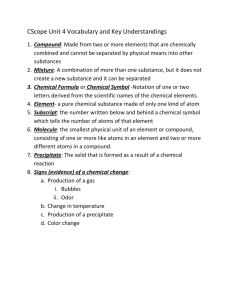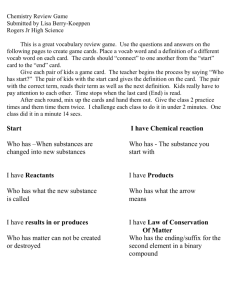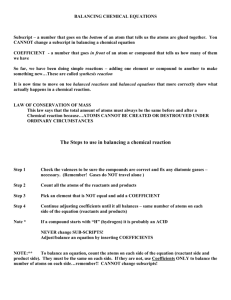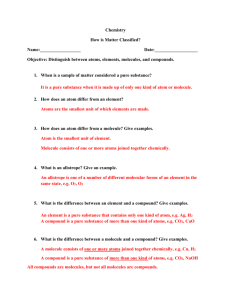chemical formulas notes and practice
advertisement
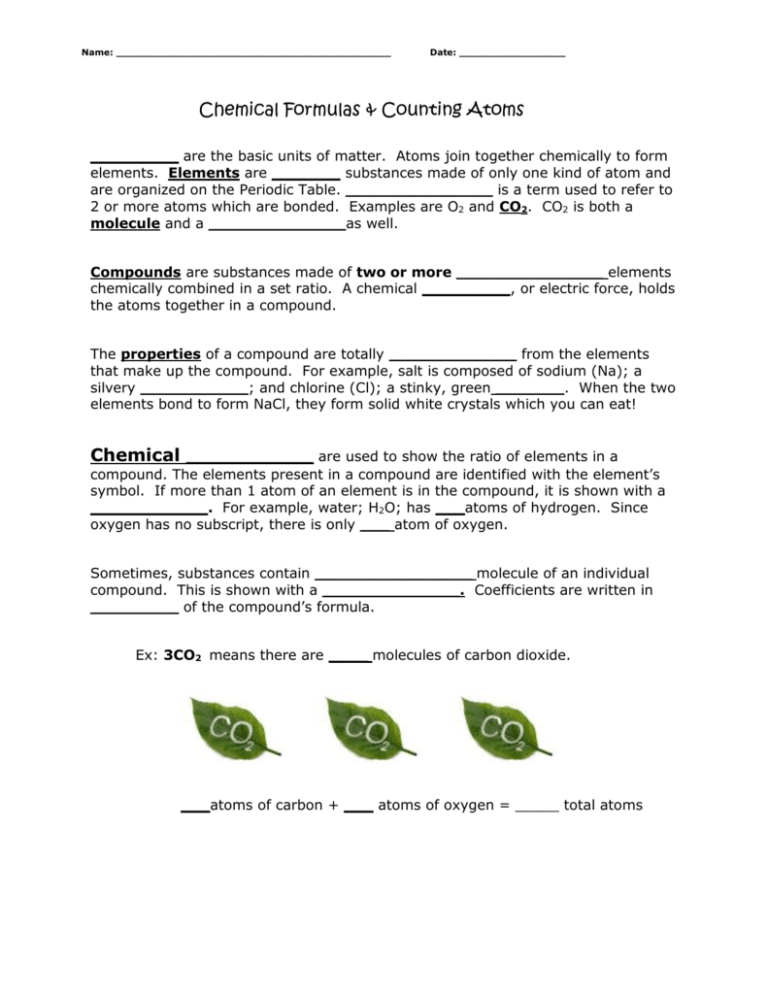
Name: ____________________________________________ Date: _________________ Chemical Formulas & Counting Atoms _________ are the basic units of matter. Atoms join together chemically to form elements. Elements are _______ substances made of only one kind of atom and are organized on the Periodic Table. _______________ is a term used to refer to 2 or more atoms which are bonded. Examples are O2 and CO2. CO2 is both a molecule and a ______________as well. Compounds are substances made of two or more _______________ elements chemically combined in a set ratio. A chemical _________, or electric force, holds the atoms together in a compound. The properties of a compound are totally _____________ from the elements that make up the compound. For example, salt is composed of sodium (Na); a silvery ___________; and chlorine (Cl); a stinky, green _______. When the two elements bond to form NaCl, they form solid white crystals which you can eat! Chemical _____________ are used to show the ratio of elements in a compound. The elements present in a compound are identified with the element’s symbol. If more than 1 atom of an element is in the compound, it is shown with a ____________. For example, water; H2O; has ___atoms of hydrogen. Since oxygen has no subscript, there is only ___ atom of oxygen. Sometimes, substances contain ________________ molecule of an individual compound. This is shown with a ______________. Coefficients are written in _________ of the compound’s formula. Ex: 3CO2 means there are ____ molecules of carbon dioxide. ___atoms of carbon + ___ atoms of oxygen = _____ total atoms Compound H2O ZnCO3 Al2O3 3Na2SO3 Name Use Elements present Total # of atoms water Supports life 2-hydrogen 1-oxygen 3 zinc carbonate aluminum oxide Hazardous substance in makeup, plastics, etc. Used in ceramics sodium sulfate Used in soaps and detergents glucose Sugar methane Flammable gas used in heating homes hydrochloric acid Used in steel pickling, oil well acidizing, etc. Calcium carbonate Limestone Aspirin Pain reliever Magnesium hydroxide Found in milk of magnesia Trinitrotolue ne (TNT) Explosive Calcium dihydrogen phosphate Fertilizer C6H12O6 5CH4 2HCl CaCO3 2C9H8O4 Mg(OH)2 C7H5(NO2)3 Ca(H2PO4)2 # of molecules 1
